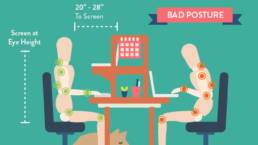Bones are Living Tissues
When it comes to bones, patients regularly have the image of ‘steel rods’ or ‘concrete pillars’ used to support the body and allow muscles to attach to.
Fact is, the bones in our body are in constant change all the time. Bones are always undergoing remodeling and repair. This happens via a collaborative effect of bone cells labelled osteoblasts and osteoclasts. Osteoblasts help lay down new bones, while osteoclasts dissolve bone. This is integral to allow for adaptation of bones. Our bone cells are influenced by the levels of calcium in the body and hormones.
This is why adequate calcium intake and a good nutrition plan is vital. As we age we may undergo hormonal changes such as reduced testosterone in males and menstrual disturbances in females, all of this could cause decrease in bone density and osteoporosis!
Bones like every other living tissue in our body undergoes a process of ‘break down’ as they undergo loading and use. The amount of ‘break down’ is related to the amount of activity or load they undergo. A walk in the park will not cause as much breakdown as lifting heavy deadlifts at the gym. When we load our bones up too much without sufficient time for recovery, a bony stress injury can develop.
While it is commonly known that low bone density will increase the likelihood of the development of stress fractures, recent development has revealed that joint range of motion, muscular flexibility and alignment may play a big role as well. A joint that is restricted or not having a full range of motion does alter loading responses and influences the magnitude of strain going through the bone.
We hope this short post has helped you gain a further understanding of bones. If you are struggling with any pains and would like to get it professionally assessed, feel free to come consult our practitioners.
References
Florencio-Silva R., Sasso GR, Sasso-Cerri E., Simoes MJ, Cerri P.S. Biology of bone tissue: Structure, function, and factors that influence bone cells. Biomed Res Int. 2015;2015:421746.
Bennell K., Matheson G., Meeuwisse W., Brukner P. Risk factors for stress fractures. Sports Med. 1999;28(2):91-122.
Related Posts
Ask The Experts: Prostate Cancer Awareness Month
11 September 2017
September is International Prostate Cancer Awareness Month and this year our friends at the Prostate Cancer Foundation of Australia (PCFA) will host a webcast to assist in promoting greater awareness of Prostate Cancer and information provision to the Australian community
0 Comments1 Minutes
Sitting Less and Moving More!
13 November 2017
Office workers are one of the most sedentary occupational groups whereby most of them spent over 75% of their working hours being deskbound. Research has shown that an average office worker spends approximately 80,000 hours in sitting position over the course of their career journey.
0 Comments1 Minutes


